Clean High Pull: How To, Benefits & Variations
Unlock your full potential by engaging with our experts and community! Have questions about your fitness journey or looking for expert advice on weightlifting techniques? Don’t hesitate — leave a comment below and Oleksiy Torokhtiy will provide a personalized answer and insights to help you reach your goals.
Torokhtiy is reader-supported. Some links are affiliate links, and we may earn a commission at no extra cost to you. See our disclosure page for details.
If you had to describe the clean high pull in one word, it would be – explosive. It’s a dynamic exercise that will add some serious power to your workouts. It will build strength, improve athleticism in general and it can fit seamlessly into your routine regardless of your fitness level.
We’ll tell you all about it; what makes it special, what benefits you can expect to get from it, expert tips on how to make it work according to where you’re at in your fitness journey and a whole lot more.Let’s learn all about clean high pulls!
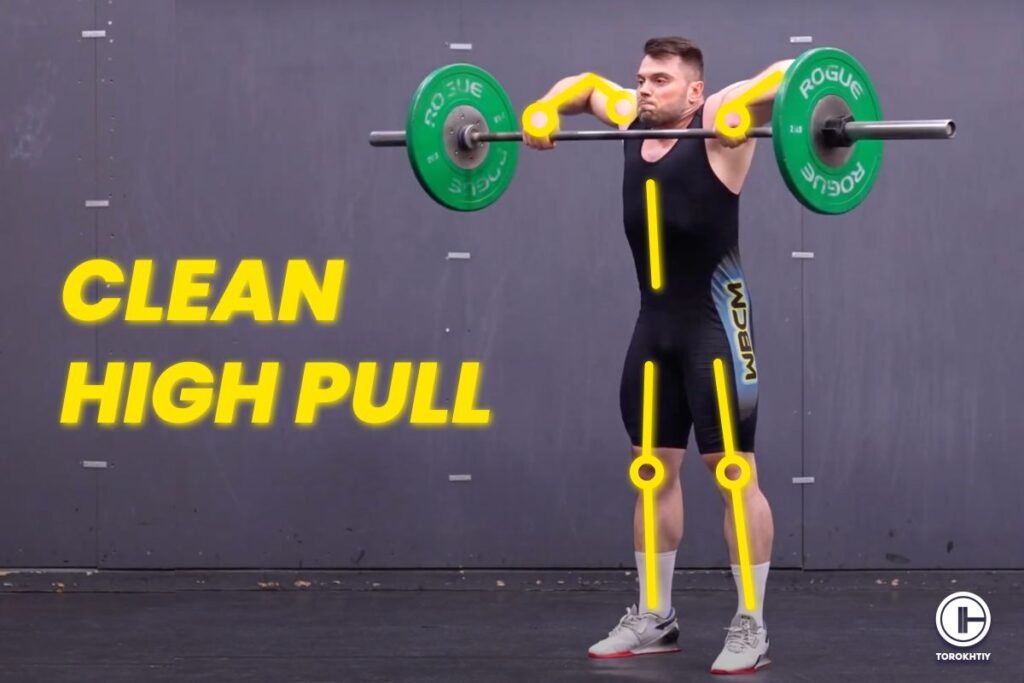
What Is the Clean High Pull?
Clean high pull, or clean grip high pull as it’s sometimes referred to (high pull with clean grip), would be best described as this: Try to imagine a combination of a deadlift and an upright row, but with an explosive element to it. You lift the barbell off the floor to your hips, then quickly pull it up to your chest while your elbows stay high and wide.
It’s designed to build strength and power in your hip and legs but also address shoulders, traps, and upper back, so in the end, you get a full-body exercise.
Its main purpose is to improve your athletic performance, and it does so by improving your ability to quickly generate force.
How to Do the Clean High Pull?
As with any exercise – it’s all about technique. Let’s see how to do it properly.
1. Starting Position
Your feet need to be shoulder-width apart with toes pointing out a little. The barbell is on the floor in front of you. Keep your back flat and chest up. Your shoulders should be directly over the bar and your hips lower than the shoulders. Engage your core to stabilize the spine.
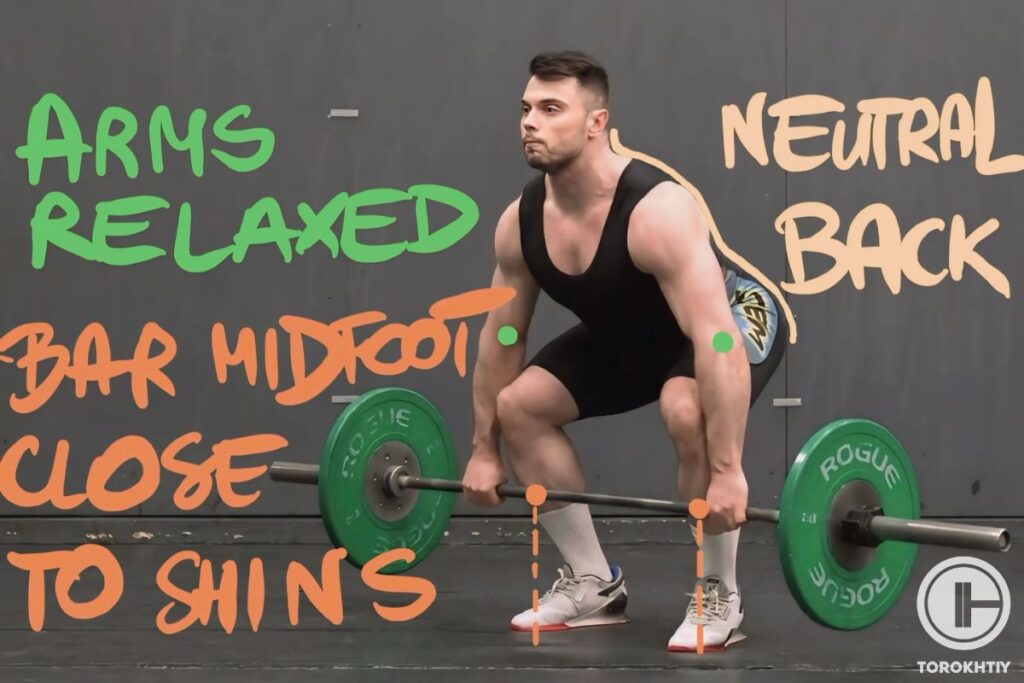
2. First Pull
Now it’s time to actually lift. Extend your hips and knees and lift the bar off the floor. Keep it close to your body and keep your back straight. This is a controlled movement (slower than the upcoming second pull), with the bar reaching just above your knees.
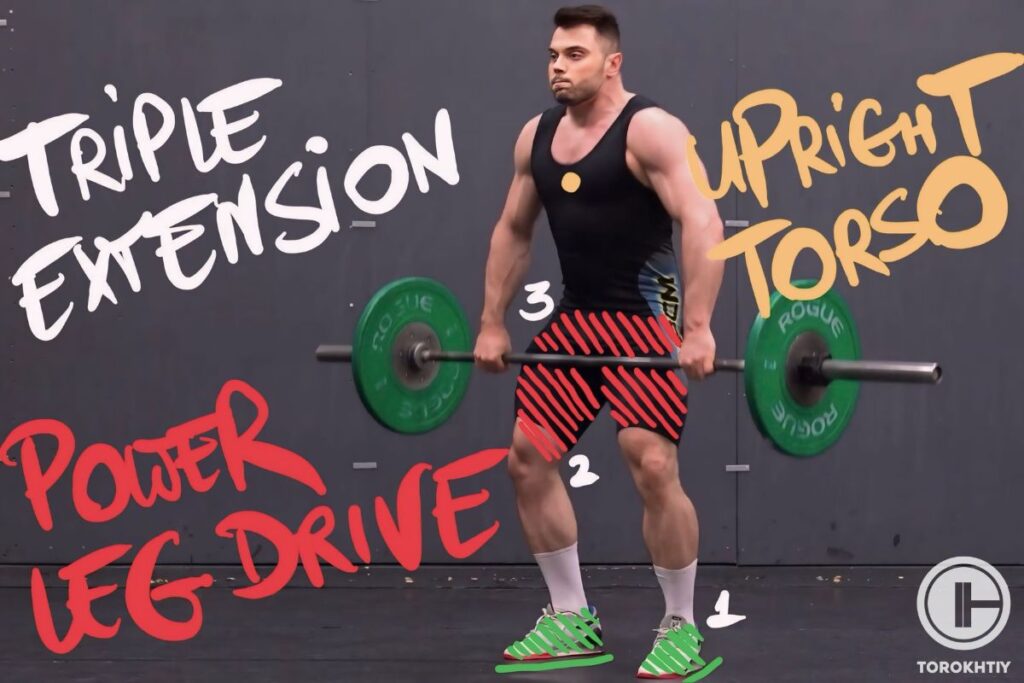
3. Second Pull and Power Position
As the bar passes your knees, transition into the power position by ensuring your torso is upright, hips and knees bent, ready to generate some explosive power.
Now, explode up – extend your hips and legs (knees, ankles) simultaneously, and once the barbell is in your mid-thigh (power position), you need to shrug your shoulders and pull the bar up with your arms.
Keep the elbows high and to the sides. Keep in mind that the whole force needed for the momentum of the barbell should peak in the power position.
4. Arm Pull
When the bar gets to chest height, your elbows need to be up and out. There’s no turnover here like there is in the clean – focus on achieving max height and power in the pull.
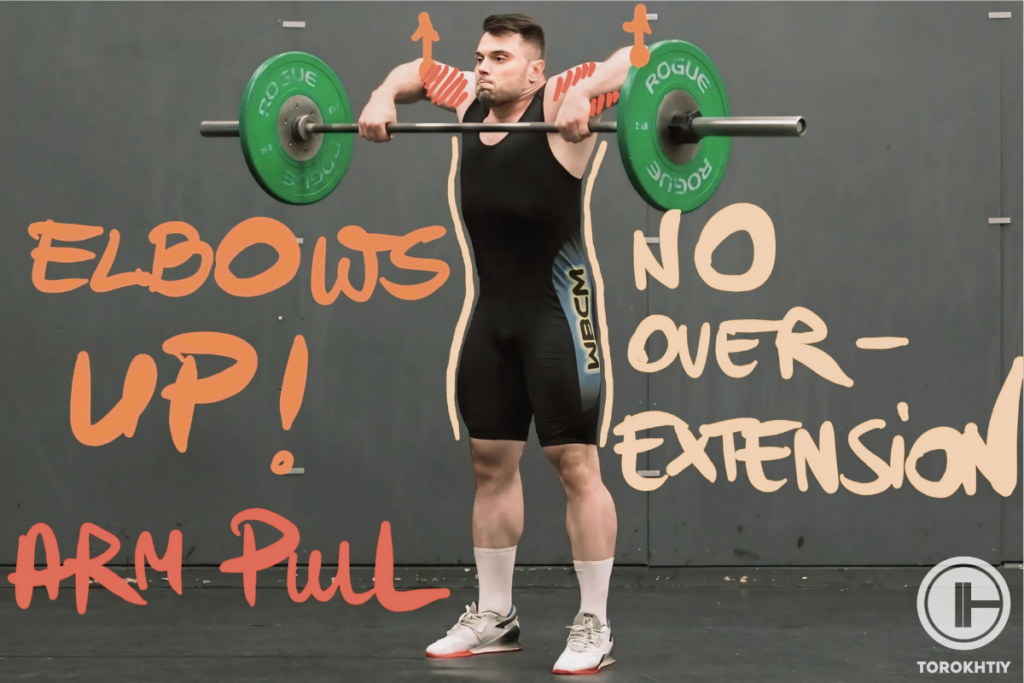
5. Lower the Bar
Bend your hips and knees to bring the bar back down and you’re done! The clean high pull is over. Now… Rinse and repeat!
Save it for easy access!
Bookmark this page now to access the program and instructional videos anytime, anywhere.
Stop wasting time searching during your gym sessions.
A Simple Clean High Pull Program
| Level | Reps | Sets | Frequency |
|---|---|---|---|
| Beginner | 3-5 | 3 | 2 times per week |
| Intermediate | 3-5 | 4-5 | 2-3 times per week |
| Advanced | 1-3 | 5-6 | as much as needed |
Beginner
- Reps: 3-5
- Sets: 3 sets
- Frequency: 2 times per week
- Progression: Form is your priority so work with either an empty bar or super light weights. Once you learn the form, you can start increasing the weight in 5–10-pound increments.
Intermediate
- Reps: 3-5
- Sets: 4-5 sets
- Frequency: 2-3 times per week
- Progression: Start incorporating more complex drills like hang pulls and adjust the load periodically to challenge your muscles.
Advanced
- Reps: 1-3
- Sets: 5-6 sets
- Frequency: as much as needed
- Progression: Now’s the time to focus on limiting factors, since you’re already advanced. Strength, power, certain elements of the lift… Whatever the case, take the time to work on those. Adjust the weight based on force-velocity curve to train what needs to be trained
Follow us!

Free!
Get a 2-week Weightlifting Program as a bonus for the subscription to kickstart your training plan!

Free!
3 Common Clean High Pull Mistakes
❌ Poor Starting Position
If you don’t start off correctly, you’re in a pickle because it will throw the whole lift off. Starting with the hips too low or too high will give you an inefficient power transfer and you can strain your lower back.
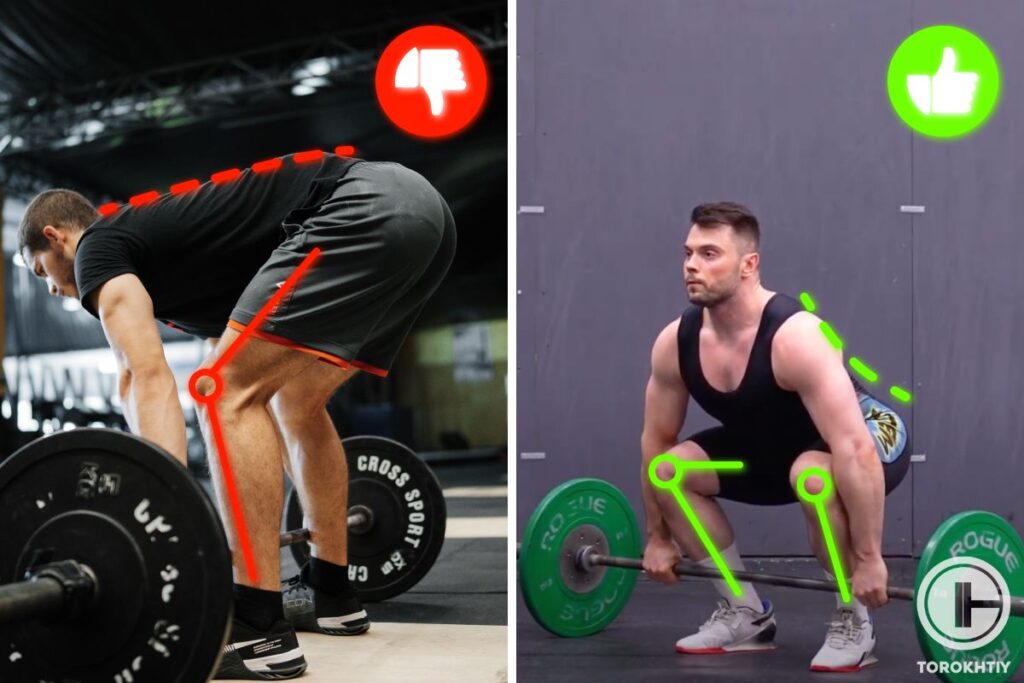
❌ Rounding the Back
Keep your spine neutral. If you don’t, it will cause a lot of stress on your back. This usually happens because the core is not engaged properly or it’s just not strong enough.
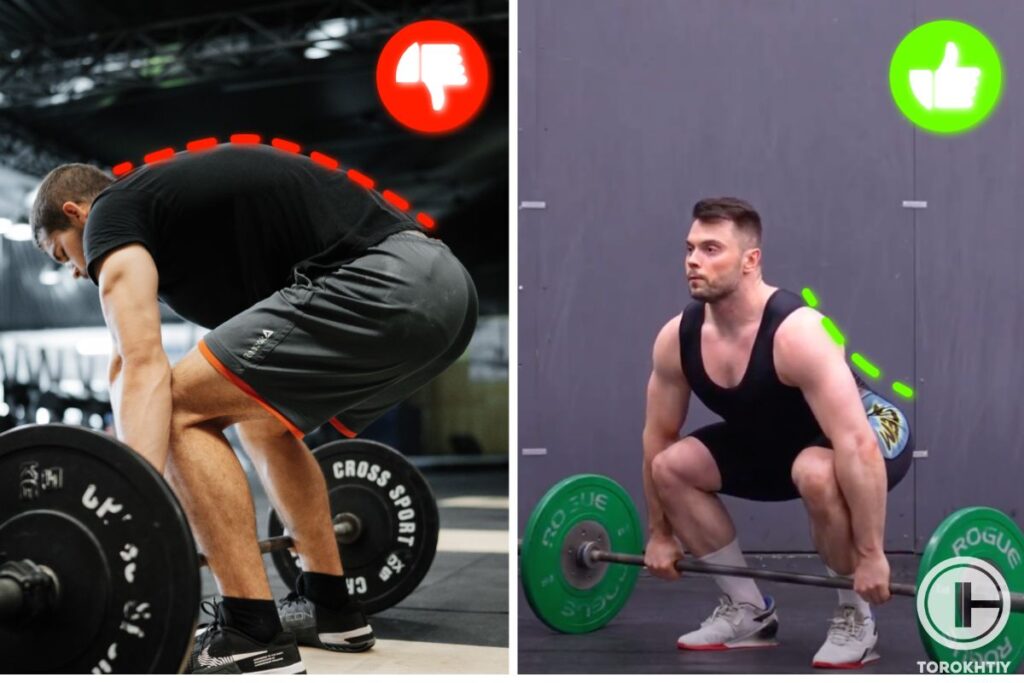
❌ Pulling Too Early
If you engage the arms too early, it will reduce the power that comes from your lower body. You should be driving through the legs and hips before the arms.
Tips From the Champ
When I coach the clean high pull, I emphasize staying patient. This exercise is more about mastering the timing and bar path than just power. Nail these details, and your clean will feel more effortless and explosive.
Olympic Weightlifting Champion
3 Clean High Pull Benefits
✅ Power Development
The clean high pull is excellent for those that want to develop their explosive power. The triple extension mimics movements you’ll find in many sports, so it can improve your performance in everything that’s explosive.
✅ Building Strength
A lot of your muscles will be engaged, like your posterior chain, shoulders, and traps. Building these areas will help build strength in general. However if your main goal is building pulling strength in clean, you should probably stick to regular clean pull.
✅ Improved Bone Density
Weight-bearing exercises will do wonders for bone density, and the clean high pull is no exception. It stimulates the growth of bone tissue, and it can help prevent osteoporosis.
3 Clean High Pull Variations
1. Hang Clean High Pull
Start with the barbell at your knees instead of the ground. This exercise focuses more on the explosive part of the lift and less on the initial pull from the floor, so it will help improve power in the second phase of the clean.
2. Block Clean High Pull
You’ll start the lift with the barbell elevated on blocks, so you can focus on the explosive triple extension of the hips, knees, and ankles. This can be a good way to improve strength and power in the 2nd pull.
3. Clean High Pull from Deficit
Stand on a small platform to increase the range of motion and do the clean high pull. It’s great for improving your ability to generate power from a deeper, more challenging starting position.
3 Clean High Pull Alternatives
1. Single-Arm Dumbbell Clean High Pull
Use a dumbbell instead of the barbell for a unilateral version of the exercise. It can help identify and handle muscle imbalances between sides of the body. Those can cause injuries, so make sure to get them taken care of.
2. Snatch (High) Pull
As if you were doing a Snatch, stand in front of the bar with your feet at hip-width. Grab the barbell with a wide (close to the weight plates) grip. From the squat position that you’re currently in, drive the movement through your midfoot to lift the bar. Keep your back straight and maintain the bar in close proximity to your shins. As the barbell crosses your knees, explosively extend your hips and knees.
Once the barbell passes your mid-thigs, execute a mighty shoulder shrug, continuing to pull the bar with your arms (elbows should be up and outwards) until the barbell reaches your belly (or higher). Once the barbell reaches that point (ideally neck height in case of high pull), abruptly stop pulling up and drop the barbell to your hip level. This finishes one REP.
3. Sumo Deadlift High Pull
Start off in a standing position with a wide stance (reverse V-shaped, slightly wider than shoulder-width). If you’re familiar with a sumo deadlift, then you’re halfway there already. Your hands should be in the area between your legs, holding the barbell.
Bend your hip and try to maintain vertical shins, while keeping your spine straight (ensure the knees are in line with your toes) and your shoulders a bit in front of the bar at setup. Once you start the movement and start lifting the bar, keep your heels down and arms straight until your hips and legs fully extend (this way, you’re lifting with your legs and your back).
Continue raising the bar. As it crosses your mid-thighs, start shrugging your shoulders and start transitioning into lifting the bar with your arms instead. Pull the bar with your arms up towards neck height (go for the chest at least). Your elbows should move high and outside.
Complete the movement/extension with the barbell pulled to the clavicle. Then lower the barbell (controlled) down to your mid-thighs, after which you’ll start bending your back while maintaining the lumbar curve. Drop the barbell to the floor, and get back into the starting position.
Who Should Do the Clean High Pull?
1. Weightlifters
If you’re a weightlifter, you can use the clean high pull to develop power, speed, and coordination and bar path for the clean and jerk. It can improve the pull phase of the lift and strengthen the muscles that are used during Olympic lifting.
2. Martial Artists
Martial artists can benefit from improving their ability to generate power quickly from the hips. The clean high pull will improve explosive hip extension, and that will be useful for kicks and strikes.
3. Anyone Looking to Improve General Fitness
People who are part of the general fitness program shouldn’t skip the clean high pull because it’s an excellent compound exercise that will improve coordination and power, plus it will work multiple muscle groups at the same time.
4. Athletes
Basketball, football, soccer, track and field… If any of these is your sport, give the clean high pull a try. It will improve your vertical jump and speed, plus it will make it easier for you to do quick changes in direction.
🔻CLEAN CYCLE Program
Crush Your CLEAN PR in 5 Weeks! 🏋️
Achieve:
- 🏅New CLEAN Records.
- 💪Master CLEAN variations.
- 🏋️♂️Focus on back and leg strength.
- 🎯Specific skills and drills for your CLEAN.
Highlights:
- 📆 5 Days / Week
- ✅ Varied Lifts
- 💪 Strength & Technique
- 🔥 Healthy Warm-Ups
Elevate your CLEAN game today! 💥
Muscles Worked by the Clean High Pull
You already know it’s a compound exercise and that means there are several muscle groups involved. Or, in this case, most of them.
The clean high pull mostly targets your posterior chain, but it also engages the muscles in your upper body (traps, deltoids, muscles in the upper back). You start off by powerfully extending the hips and leg, which activates your quads and calves. Then you have the pulling phase, where your arms and shoulders work to guide and elevate the bar. And to top all of it off, you have your core stabilizing you throughout the entire lift.
Conclusion
If there’s one thing we would want to leave you with… Well, no, there’s more than one important thing we’d want to reiterate.
Basically, give the clean high pull a try even if you’re not that into lifting because the benefits go way beyond just being able to lift a heavy weight. Just make sure to always stick to proper form so you’re safe and don’t push yourself too far – your muscles need time to recover, so have a day or two to rest.
And that’s really all from us but we’d love to hear what you think because there has to be something you would want to add!
Have you tried the clean high pull or any of its variations? Has it helped you in any way? Were there unexpected benefits you noticed? How did you handle those roadblocks that inevitably popped up here and there?
Leave your comments, we can’t wait to see what you have to say!
References:
- Becks Shepherd “Why are rest days important?” LiveScience, https://www.livescience.com/why-are-rest-days-important (accessed June 21st, 2024)
- Health Promotion Board (HPB) “Prevent Injuries with Proper Form During Workouts,” Singapore University Health Center, https://www.nus.edu.sg/uhc/articles/details/prevent-injuries-with-proper-form-during-workouts (accessed June 21st, 2024)
- “Prevention Osteoporosis,” National Health Service, https://www.nhs.uk/conditions/osteoporosis/prevention/ (accessed June 21st,2024)
- “Slowing bone loss with weight-bearing exercise,” Harvard Health Publishing, https://www.health.harvard.edu/staying-healthy/slowing-bone-loss-with-weight-bearing-exercise (accessed June 21st, 2024)5. Venkat S. R. “What Are Muscle Imbalances?” WebMD, https://www.webmd.com/fitness-exercise/what-are-muscle-imbalances (accessed June 21st, 2024)
- Photos by Torokhtiy Media Team.
Why Trust Us?
With over 20 years in Olympic weightlifting, strength training, nutrition coaching, and general fitness our team does its best to provide the audience with ultimate support and meet the needs and requirements of advanced athletes and professional lifters, as well as people who strive to open new opportunities and develop their physical capabilities with us.
By trusting the recommendations of our certified experts in coaching, nutrition, and sports training programming, as well as scientific consultants, and physiotherapists, we provide you with thorough, well-considered, and scientifically proven content. All the information given in the articles concerning workout programming, separate exercises, and athletic performance, in general, is based on verified data.
The product testing process is described in more detail here.
Author: Oleksiy Torokhtiy
Olympic Weightlifting Champion
Best Results: Snatch – 200 kg,
C&J – 240 kg
Oleksiy Torokhtiy is a professional athlete boasting 20 years of experience in Olympic weightlifting. With multiple European and World titles under his belt, he has showcased his prowess in two Olympic Games (Beijing 2008 and London 2012). Upon concluding his illustrious career, Oleksiy dedicated himself to coaching. By 2022, he had conducted over 200 weightlifting seminars worldwide. He is the visionary behind an international sportswear and accessories brand known for its motto, “Warm Body Cold Mind.” Additionally, he is an esteemed author and the creator of a series of training programs and eBooks.



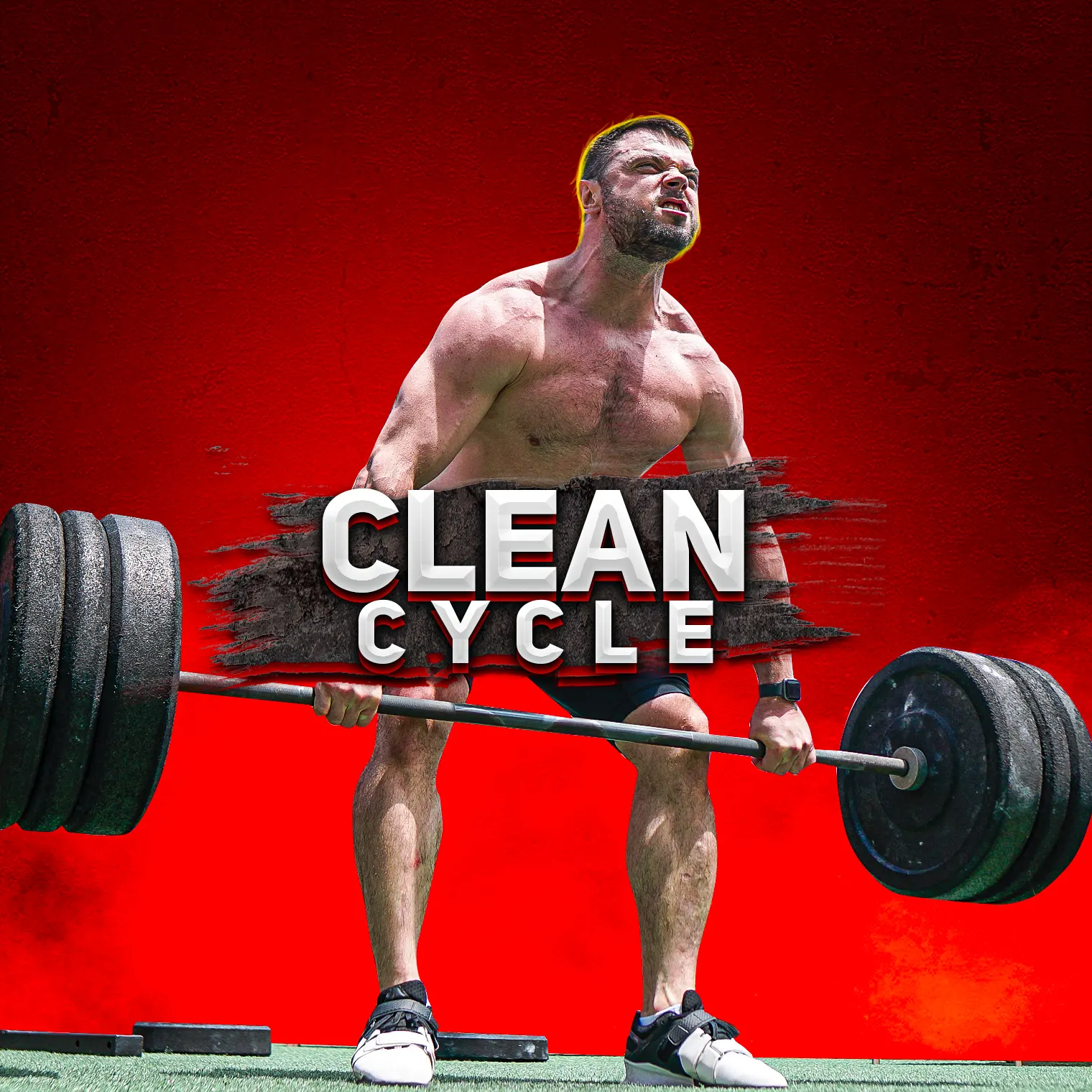

Still have questions after reading our article? Unlock your full potential by engaging with our experts and community! Don’t hesitate — leave a comment below and Oleksiy Torokhtiy will provide a personalized answer and insights to help you reach your goals.